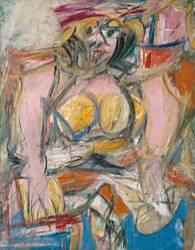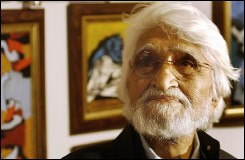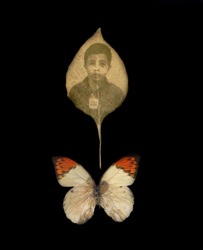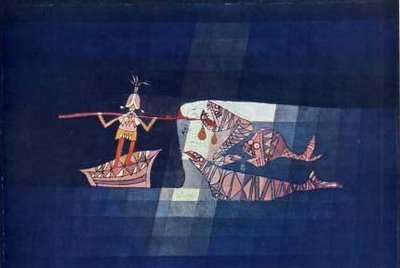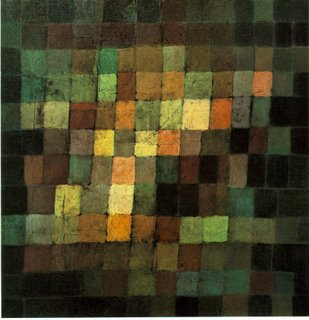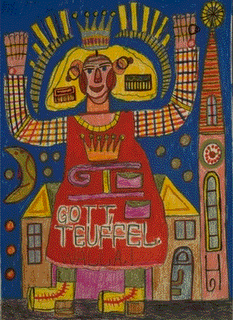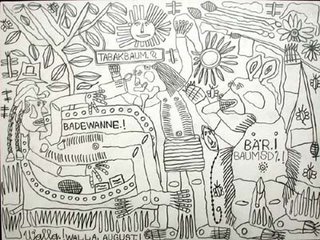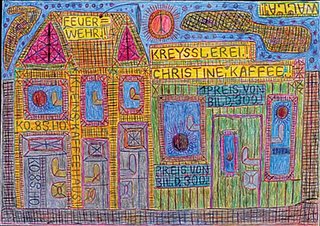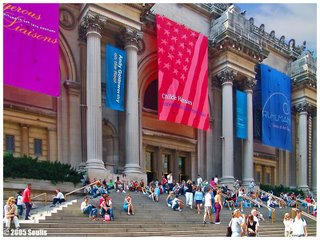The National Palace Museum in Taipei is celebrating its rarest works. More Photos >
*
* Reprints
* Save
* Share
o Digg
o Facebook
o Newsvine
o Permalink
Article Tools Sponsored By
By KEITH BRADSHER
Published: December 28, 2006
TAIPEI, Taiwan, Dec. 27 — After four years of renovations that closed two-thirds of the building, the museum housing the world’s most famous collection of Chinese art is reopening this winter and holding a three-month exhibition of its rarest works.
The National Palace Museum, home to the best of the 1,000-year-old art collection of China’s emperors, is often compared to leading Western institutions like the Louvre, the Prado and the Metropolitan Museum of Art. But while this museum’s holdings are magnificent, the institution has been known for being a highly politicized place where priceless porcelain sat in poorly lit display cases and where invaluable paintings were kept in a damp manmade cave for fear of Communist attack from mainland China.
That has now changed. Heroic statues of Chiang Kai-shek, Taiwan’s former leader, and of Sun Yat-sen, the founder of modern China, have been banished. New lighting, air-conditioning, climate-controlled storage vaults and other features rival the newest museums in the West. Even the wall labels attached to the artwork are now written in clear and specific Chinese, English and Japanese.
And after many years of hiding its most valuable and most fragile artworks — those from the Northern and Southern Sung dynasties that ruled China from 960 to 1279 — the museum has brought them out for a “Grand View” exhibition that opened on Christmas. Four of the best known Northern Sung dynasty paintings — one of them on loan from the Metropolitan Museum in New York — are being shown together for the first time, along with other rare paintings, scrolls and some of the world’s earliest printed books.
The four paintings are magnificent landscapes that tower over visitors but still have the exquisite detail of miniatures. The Chinese characters of the name of one artist are so subtly hidden in the trees of one painting that they went unnoticed until this century. A deputy director of the museum is credited with discovering them, although rumor says that a janitor was really the first to find them, said Ho Chuan-hsing, a museum specialist in early paintings and calligraphy.
Many of the pieces are so fragile that they are never lent to museums elsewhere. Some will only be on display here for half the exhibition: either from Christmas to Feb. 7 or from Feb. 8 to March 25. Museum policy allows these works to be shown only for 40 days, after which they are loosely rolled and placed in a vault to rest for at least three years; the exhibition here will not go on tour.
Art scholars describe the “Grand View” as unique.
“To see all of these paintings come out at one time again is just not going to happen,” said Marc F. Wilson, a Chinese-art specialist who is the director and chief executive of the Nelson-Atkins Museum of Art in Kansas City, Mo., which lent two rare scrolls to the exhibition here. “These are the foundations of modern Chinese pictorial sensibility.”
Also on temporary display this winter in a single case are 50 of the 70 known examples of Ju Ware, one of the world’s rarest and most valuable kinds of porcelain. Manufactured for imperial use at a single kiln in central China for just two decades at the end of the 11th century, Ju (pronounced rue) Ware is glazed with a lustrous, green-tinged shade of blue that has a faint, rose sparkle.
Craftsmen ground up agate, a semiprecious quartz, to make the glaze, using a technique that was soon lost and has never been rediscovered. The 50 pieces on exhibit here include the museum’s own 21 examples and 29 borrowed from other collections around the world.
The presentation of the Ju Ware is raising eyebrows at a museum so conservative that many of the curators wore the traditional blue silk robes of Chinese scholars into the 1970s. The vases and dishes sit on a 100-foot-long, waist-high white surface that is an imitation of the runways on which models promenade at fashion shows.
Jimmy Yang, a 33-year-old Taiwan-born but Australian-educated architect and designer who showed up at the opening on Christmas in a black T-shirt and blue jeans, arranged the exhibition.
“We wanted it to be a little more up-to-date, a little humorous even,” he said as visitors began ogling the spotlighted vases.
Chi Jo-hsin, the chief curator of the museum’s antiquities department, acknowledged that the presentation had been controversial within the museum’s staff. “Some think it is good, and some think it should be different,” she said.
The Imperial Palace in Beijing, better known as the Forbidden City, became a museum in 1925 as part of a republican bid to prevent the restoration of the last emperor, Pu Yi. When Chiang Kai-shek’s Nationalists became worried in 1933 about a possible Japanese attack, they secretly sent the collection in wheelbarrows to Beijing’s train station to be transported south, the start of the collection’s 16-year odyssey during war with Japan and China’s civil war.
The Nationalists ended up shipping the most valuable art to Taiwan, where it has remained ever since. The mainland government has since gathered at museums in Beijing and Shanghai a large number of the works that were left behind, together with the fruits of archaeological excavations as well as the purchase or confiscation of mainland collections and gifts from tycoons in Hong Kong and elsewhere.
The exhibition here is taking place in rooms that have been heavily renovated as part of an extensive overhaul of the museum. Elevators and other features have also been added to make the building completely accessible to the elderly and the disabled, and the building has been strengthened to improve protection against earthquakes, including one that shook Taiwan on Tuesday evening but did not damage the museum or its collection.
Tu Cheng-sheng, who started the renovation as the museum’s director in 2002, said then that it would be too controversial to remove the memorial hall dedicated to Sun Yat-sen, a symbol of Taiwan’s ties to the mainland. But the hall and its giant bronze statue are gone now, a disappearance that Ms. Lin and Mr. Tu, now Taiwan’s education minister, declined in separate interviews to discuss.
The building’s exterior still has jade-green tile roofs and yellow walls designed to evoke the Forbidden City. But the museum’s celebrated tearoom has been transformed as part of an effort by Ms. Lin, the director, to address a problem facing art museum directors all over the world: how to draw the young and trendy.
While the museum’s collection has an international reputation among art connoisseurs, it has been distinctly less popular in Taiwan, and especially among young Taiwanese who feel little connection to the mainland. Slightly more than half the museum’s two million visitors a year come from outside Taiwan, mainly from Japan, Korea and other countries in Asia.
The tearoom, on the museum’s top floor with lovely views of the surrounding mountain valley, used to be a reproduction of the Three Treasures room at the Forbidden City, complete with an elaborately carved and flamboyantly painted ceiling. The ceiling has now been covered with gray-brown paint and the room turned into a very contemporary Taiwanese tearoom with sturdy furniture made of oak, not traditional sandalwood.
The “Grand View” this winter may also represent the last chance for visitors from the United States and elsewhere to see the best of China’s art without having to push through throngs of mainland Chinese tourists.
Taiwan is negotiating with Beijing officials to allow mainland tourists to start visiting here this spring. While the number of tourists is supposed to be limited to 1,000 a day at first, the tourism industry is expected to press for quick increases in that cap.
Jason Kuo, a Taiwan-born professor of Chinese art history at the University of Maryland who studied at the National Palace Museum from 1971 to 1973, said the museum faced a difficult balance as it prepares to handle more visitors, appeal to young Taiwanese and protect the art collection.
“They want to be open to the West,” he said, “but they want to maintain their heritage.”
